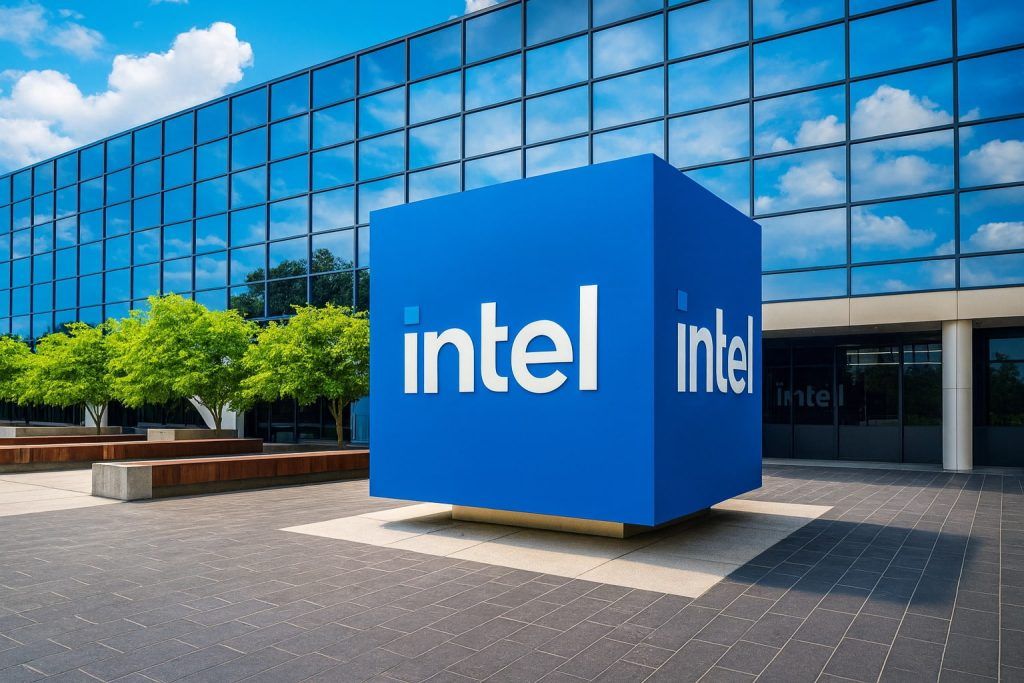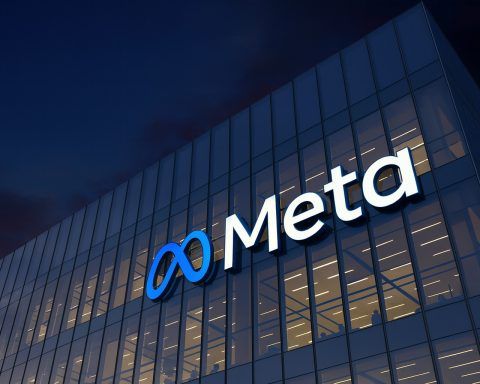Micron Technology (NASDAQ: MU) spent Thursday under pressure, even as Wall Street’s biggest banks and the company itself delivered more bullish news for the memory giant.
On November 13, 2025, Micron shares closed at $236.95, down about 3.25% on the day. The stock traded between $230.16 and $249.50 with heavy volume of more than 32 million shares, well above typical recent levels. [1]
The pullback came during a sharp market-wide selloff: the Dow Jones Industrial Average fell nearly 800 points (~1.7%), the S&P 500 dropped about 1.7%, and the Nasdaq Composite slid roughly 2.3%, its worst day in over a month as investors dialed back expectations for rapid Fed rate cuts and rotated out of high-growth tech and AI names. [2]
Yet underneath today’s red ink, Micron’s fundamental story arguably got stronger, not weaker.
Micron stock today: key numbers at the close
- Closing price: $236.95
- Daily change: –3.25%
- Intraday range: $230.16–$249.50
- Volume: 32.2 million shares [3]
Even after today’s drop, Micron remains one of 2025’s top AI winners: multiple recent analyses peg its year‑to‑date gain around 180–190%, far outpacing broader semiconductor indices. [4]
Morgan Stanley makes Micron a “Top Pick” and lifts price target to $325
The most eye‑catching headline for MU stock today came from Morgan Stanley:
- The bank reiterated its “Overweight” rating on Micron.
- Analyst Joseph Moore raised his price target from $220 to $325, a roughly 48% increase in his target and implying substantial upside from recent levels. [5]
This upgrade capped a series of aggressive target hikes from major firms over the past month:
- Wells Fargo: target raised to $300 (Overweight)
- Mizuho: to $265 (Outperform)
- Citigroup: to $275 (Buy)
- Barclays: to $240 (Overweight)
- UBS: to $245 (Buy) [6]
Data compiled by Quiver Quantitative shows no recent sell ratings on MU, with a median 6‑month price target around $200 but a rapidly rising high end as AI optimism builds. [7]
Morgan Stanley’s bullish stance is rooted in several themes echoed by other research houses:
- AI memory supercycle: Demand for high‑bandwidth memory (HBM) and advanced DRAM used in AI servers is surging and appears more structural than cyclical. [8]
- Tight DRAM supply: Industry‑wide DRAM shortages are giving Micron pricing power and boosting margin expectations. [9]
- Balance sheet strength: Zacks and others highlight Micron’s improving free cash flow and balance sheet as allowing continued investment in cutting‑edge nodes while still rewarding shareholders. [10]
In other words, today’s downgrade in price doesn’t reflect a downgrade in Wall Street’s expectations; if anything, the Street got more optimistic.
Fresh Zacks research: MU still a top AI memory play
In its November 13 Zacks Research Daily, Micron was featured alongside Nvidia and Thermo Fisher as one of the day’s top coverage updates. Key points from the Micron section: [11]
- Micron’s shares have crushed their industry so far in 2025 (around +180% vs. +96% for its peer group).
- Analysts see HBM demand and DRAM price recovery as major tailwinds for revenue and earnings in coming quarters.
- Long‑term customer agreements and expanding AI partnerships are improving revenue visibility and reducing volatility.
- Risks include a slower‑than‑expected NAND recovery and potential headwinds from trade tensions.
That combination — powerful AI‑driven growth but ongoing cyclic and geopolitical risk — is exactly what’s playing out in the market today: a high‑beta AI winner getting hit hard on a risk‑off macro day.
New automotive UFS 4.1 chip: Micron leans deeper into in‑car AI
Beyond Wall Street research, Micron released major product news this morning.
At 9:00 a.m. EST, the company announced it has begun shipping qualification samples of its Automotive UFS 4.1storage solution, built on its ninth‑generation 3D NAND. [12]
Coverage from Benzinga and Yahoo Finance highlights several key specs and goals: [13]
- Bandwidth of about 4.2 GB/s, roughly double its prior generation, enabling much faster data access in vehicles.
- Designed to support AI‑heavy in‑car workloads, including:
- Voice assistants and personalized infotainment
- Real‑time safety alerts
- Data‑hungry ADAS and autonomous‑driving systems (camera, radar, lidar feeds).
- Built to automotive‑grade standards (including functional safety levels such as ASIL‑B), targeting long lifespans and reliability in harsh environments.
Strategically, this matters because:
- Automotive is becoming an AI platform. Cars are turning into rolling data centers; computing, sensors, and memory needs are exploding.
- Micron is already strong in auto memory, and UFS 4.1 pushes it further up the value chain for next‑gen vehicles.
- The launch reinforces Micron’s broader narrative: AI isn’t just in data centers — it’s in phones, PCs, vehicles, and industrial endpoints, all of which need advanced memory.
Benzinga also notes that Micron’s stock is still up about 180% year‑to‑date despite today’s drop, underscoring how central the AI boom has been to its 2025 rally. [14]
New York megafab delay: huge project, slower timeline
Not all of today’s Micron headlines were unambiguously positive.
A report from ConstructConnect says Micron has delayed construction and opening of the first two fabs at its planned $100 billion megafab campus in Clay, New York by two to three years. [15]
Key details from public planning documents and Micron’s final environmental report:
- Construction start for the first fab shifts to 2026, with operations moving from 2028 to around 2030.
- Subsequent fabs on the campus are also pushed back; full build‑out of the four‑fab, 4.8‑million‑square‑foot campus is now expected around 2041, with full production by 2045.
- The site is still projected to attract over $100 billion in private investment over two decades and to create 9,000 on‑site jobs plus ~40,000 indirect jobs in New York.
- Once complete, it’s expected to be the largest U.S. DRAM manufacturing complex, a cornerstone of domestic chip resilience. [16]
For investors, this is a timing, not thesis, adjustment:
- Near‑term capex and cash‑flow strain might be somewhat lighter than previously modeled.
- Domestic manufacturing ambitions remain intact, but the on‑shore DRAM capacity ramp will be more gradual.
- Policy risk and subsidy timing (CHIPS Act and state incentives) are likely part of the calculus, even if not spelled out in today’s coverage.
Options, technicals, and trading signals around MU
New January 2026 options listed
Nasdaq’s options commentary flagged that new January 2026 options on MU were listed today. [17]
Highlights from that piece:
- A $240 put for January 2026 was quoted with a bid near $19.95, implying an effective cost basis around $220 if assigned.
- A $250 call in a covered‑call setup implied double‑digit potential returns (before dividends) if shares are called away at expiration.
- Implied volatility for the sample contracts was in the high 60–70% range, reflecting how traders are pricing MU’s big AI‑driven swings.
This underscores that Micron remains a favorite playground for options traders, which can amplify short‑term volatility around macro and company headlines.
Short‑term technical caution
On the intraday side, an analysis from AInvest pointed out that Micron’s 15‑minute chart showed both a MACD “death cross” and a KDJ death cross late in the morning, suggesting weakening short‑term momentum and the potential for further downside in the very near term. [18]
While individual technical indicators should never be relied on alone, it’s a reminder that short‑dated traders may be leaning cautious after such a massive year‑to‑date run.
Institutional interest and CEO pay headline
Micron also drew attention from filings and fund‑flow trackers:
- Connor, Clark & Lunn Investment Management opened a new ~$88.8 million position in MU, according to Quiver Quantitative’s read of fresh 13F data. [19]
- A smaller filing highlighted 3,598 shares purchased by Thompson Davis & Co. — minor in size, but emblematic of continuing institutional nibbling. [20]
Separately, a Reuters‑sourced note via MarketScreener reported that CEO Sanjay Mehrotra’s total compensation for 2025 was about $30.94 million, according to Micron’s latest SEC filing. [21]
Investors may debate executive pay levels, but the key takeaway is that Micron’s leadership is being rewarded in a year when revenue, earnings, and stock price all scaled to record territory — something that can draw both praise and scrutiny.
The bigger picture: Micron’s AI memory supercycle
Putting today in context:
- Fiscal 2025 results: Micron’s Q4 2025 earnings beat expectations, with EPS around $3.03 vs. a ~$2.77 consensusand revenue near $11.3 billion. [22]
- AI‑driven mix: A detailed breakdown from Nasdaq and The Motley Fool notes that in fiscal 2025,
- Data center accounted for about 56% of Micron’s $37.4 billion in revenue.
- Combined sales from HBM, high‑capacity DIMMs, and low‑power DRAM for AI servers hit $10 billion, roughly 5× the prior year.
- HBM alone reached roughly $2 billion in Q4, implying an $8 billion annualized run‑rate. [23]
- Forward guidance: Management has guided Q1 fiscal 2026 revenue to roughly $12.2–$12.8 billion and non‑GAAP EPS to about $3.60–$3.90, reflecting confidence that AI‑driven demand and tight DRAM supply can support further growth. [24]
Analysts frequently frame this as an “AI memory supercycle” — a multi‑year phase in which memory is no longer a commodity sidekick but a core performance driver for AI accelerators and data‑intensive workloads. [25]
Today’s headlines — from Morgan Stanley’s $325 target to the new automotive UFS 4.1 chip — line up squarely with that thesis.
What today’s Micron stock action may mean for investors
From a short‑term trading standpoint:
- A 3% drop on high volume, alongside a broad AI and tech selloff, shows that even market darlings are not immune when macro sentiment sours. [26]
- Bearish intraday technical signals and newly liquid long‑dated options may keep volatility elevated. [27]
From a fundamental and medium‑term perspective:
- Wall Street’s price‑target drift is clearly upward, not downward, with several major firms now targeting $265–$325. [28]
- Micron’s product roadmap — from HBM4 for AI data centers to UFS 4.1 for intelligent vehicles — is aligning the company with multiple secular growth vectors in AI, automotive, and data infrastructure. [29]
- The New York megafab delay tempers near‑term U.S. manufacturing timelines but does not fundamentally change Micron’s role as a leading DRAM and NAND supplier. [30]
Whether MU is attractive at today’s price depends on your risk tolerance, time horizon, and view on:
- How long the AI server buildout can sustain outsized memory pricing.
- How quickly PC, smartphone, and NAND markets normalize.
- The impact of macro factors like interest rates, government shutdown after‑effects, and global trade tensions on high‑beta tech.
Final note
This article is for information and news purposes only and does not constitute financial advice or a recommendation to buy or sell any security. Micron Technology is a volatile, AI‑leveraged stock; anyone considering an investment should carefully review Micron’s latest SEC filings, earnings materials, and their own financial situation — or consult a qualified advisor — before making decisions.
References
1. stockanalysis.com, 2. www.barrons.com, 3. stockanalysis.com, 4. www.nasdaq.com, 5. www.gurufocus.com, 6. www.gurufocus.com, 7. www.quiverquant.com, 8. www.nasdaq.com, 9. seekingalpha.com, 10. www.nasdaq.com, 11. www.nasdaq.com, 12. investors.micron.com, 13. www.benzinga.com, 14. www.benzinga.com, 15. news.constructconnect.com, 16. news.constructconnect.com, 17. www.nasdaq.com, 18. www.ainvest.com, 19. www.quiverquant.com, 20. www.marketbeat.com, 21. www.marketscreener.com, 22. www.investing.com, 23. www.nasdaq.com, 24. www.nasdaq.com, 25. markets.financialcontent.com, 26. m.economictimes.com, 27. www.ainvest.com, 28. www.gurufocus.com, 29. investors.micron.com, 30. news.constructconnect.com









